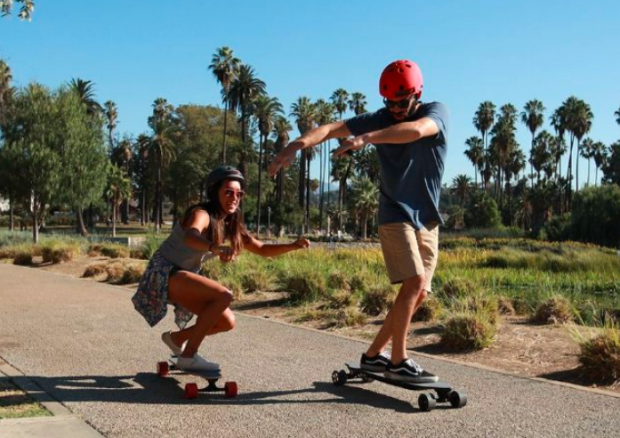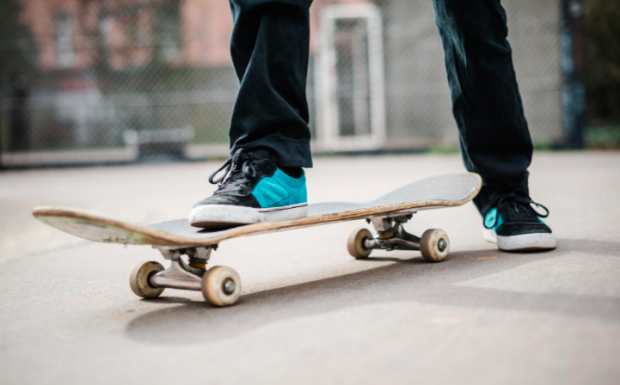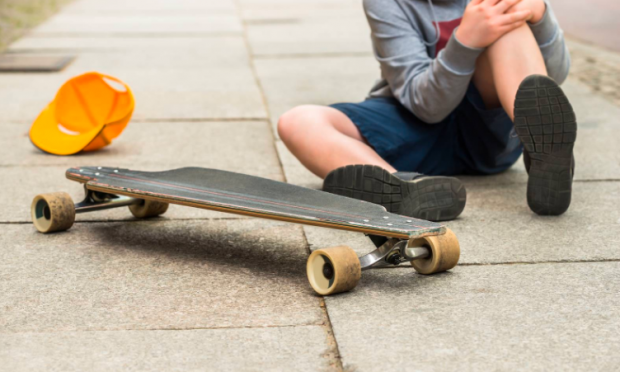Is a Longboard Safe to Ride?
Longboarding is not inherently a dangerous sport. It’s basically as hazardous or safe as you make it. Here are some of the factors that determine how dangerous it is for you.
How fast you’re riding, what kind of protective gear you’re wearing, and overall what type of riding style you do on your longboarding. Longboarding is a totally different thing where you need faster reflexes together with better balance. Ensure that you choose a good quality longboard and fits your riding style.

If you’re cruising around, pulling freestyle tricks, free riding, or downhill, be sure you’re adequately equipped with a helmet, pads, along with gloves. Wear substantial protection if you’re planning to perform high speed.
What Is a Longboard?
Before starting the discussions about ‘is a longboard safe to ride?’ Let’s examine what Longboard is. A longboard is one kind of skateboard but longer than a regular skateboard that comes with various shapes. People use these longboards for cruising, traveling as well as downhill racing.
If you’re a beginner, you can practice both longboards and skateboards. talkforscooter author Michael Burnley said, among them, longboards provide better stability together with more room to breathe. Nowadays, dancing and freestyle longboarding is becoming popular where riders use skateboard-like motions and steps.
Is a Longboard Safe to Ride?
Longboard decks are broader and longer than skateboards, which allows for more stability and balance. This does not negate the need for protective gear, so make sure you use a helmet and wrist guards to avoid injury.
Many basic longboards are designed for beginners who find smaller skateboards challenging to operate safely. This is due to its length and rigidity, which contribute to its stability.
Another issue to consider is that longboarding skating involves high-speed skating downhill, which increases the risk of high-impact injuries, necessitating the usage of protective gear.
Purchase some longboard shoes, which are designed to provide you with a good longboard grip. Don’t start skating in congested areas. Instead, practice in a parking lot or other open area with friends who can assist you in improving.
Now coming to the speed, 30 mph is quite fast for a longboard, especially compared to the average cruising speed of 6 KMH. If you are not in a rush, it is best to avoid exceeding that speed frequently. However, the pro longboarders can race downhill at speeds of 50-60 kilometers per hour.
Top 3 Things to Consider Before You Go Riding
Before you’re going to ride your favorite longboard, consider these top 3 things-
- Location
Selecting the right location for longboarding is essential as most people who are not familiar with this hobby see this as unfavorable. Make sure that you have checked the local laws about riding a longboard on public or private property like parks or shopping plazas.
- Safety
Wear sufficient protective gear because reaching 40+ MPH is easy while riding downhill. Some local governments have passed ‘reckless operation’ laws based on this. Such as, in New York, if someone sees you riding recklessly, they can report it.
- Age
In every town, there are some curfew laws to protect children under 18 and prevent crime. There are no specific curfew laws for the longboarder, but it’s safe to ride before the sun goes down.

How to Make Longboarding Safe?
While longboarding, you should wear protective gear and be cautious. Moreover, here are some tips to longboard safely on an open road-
- Helmet
Choose a lightweight helmet while riding on a longboard in order to move and turn your head smoothly. Make sure you’re not using a bicycle helmet; instead, choose a special one that can protect the back of the head. Planning to ride fast? Then select a full-face helmet that will save you from riding downhill.
- Pads
If you’re an amateur, wearing elbow and knee pads is essential. These pads will save you from scabs and pain.
- Slide Gloves
When completing pre-drifts, slide gloves allow you to put your hand down and protect your hands from scabs. Although you may not know how to drift yet, gloves will protect your hands and fingers.
- Wear Proper Gear
Commit sure that you’re wearing the right helmet size and your head fits it properly. From the local skate shop, you can purchase an affordable and durable helmet and other gear like joint guards, shoes, along with a backpack.
- Adjust and Maintain Your Board
Check the wheel size first; you should go for the larger and the softest wheel. Now choose tighter trucks to combat speed wobble. If you want to adjust the tightness of the trucks according to your demand, they have a skate t-tool; this can be your go-to equipment.
- Plan Your Route Beforehand
Before going outside and planning something, use Google Maps or check the street view. Beware of check out for steep downhills or uphills, highways, as well as under-construction areas.
- Keep Your Eyes and Ears Open
While commuting on your longboard, you have to open your eyes and ears with 100% attention. Whenever you’re on the road, be aware of the surroundings and react quickly and wisely. Don’t put on ear pads; you will distract.
- Train Your Muscle Memory
While riding on a busy road, sharp turns and sudden breaks are everyday things. Learn how to distribute your total weight between the front to back foot along with the toe side to the heel side. Learn how to fall safely and discover your own style.
- Clap
Don’t panic if someone claps with their slide gloves because this means a car is speeding behind you. Take a glance and do the right thing, like stop, or you can swerve to the right.
- Follow Traffic Rules
While you’re on your longboard, ensure that you follow all the traffic rules. Remain in your designated lane all the time; otherwise, it could be dangerous if you’re not in the closed course.

Things to Avoid During Longboarding
Here are some extra tricks that you have to follow while riding your longboard-
- Don’t Ride Backwards
Riding backward is usually entertaining, but it becomes impossible to manage the board to gain speed, which can be frightening. A rider should never ride backward during downhill longboarding. If the board picks up speed, the breaks will not operate correctly, and the speed will continue to increase. As a result, ride cautiously and avoid riding backward.
- Don’t Ride in Rainy Conditions
On rainy days when the track is wet, it can be difficult for you to control the board. On the wet roads, your board can skit.
- Avoid Jumping on the Board
Don’t jump on the board to show off your skills cause regularly jumping can break the board into two parts. So, to get a safe ride on your favorite longboard, avoid jumping on the board.
What Are Common Injuries While Longboarding
As recorded by LiveScience, a new study from Brigham Young University researchers showed that longboarding might put skaters at a higher risk of severe head injuries than skateboarding.
Between 2006 and 2011, 824 people were treated for injuries at a trauma center in Utah. The average age of those treated was 19. Among them, 57.5% were injured by longboards. Longboarders were far more likely than skateboarders to have a head fracture, traumatic brain injury, or bleeding inside the skull.
Wrapping Up
These points will keep you safe and allow you to enjoy longboarding on open roads to the fullest. By following them, you will protect not only yourself but also those around you. Longboarding will be a lot more enjoyable with less risk.
Be aware of potentially unsafe circumstances and take appropriate precautions. Now have fun cruising around on your new longboard. So, it’s time to go longboarding, take out your board, and have a good time.
